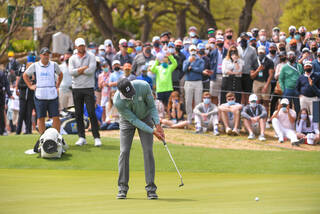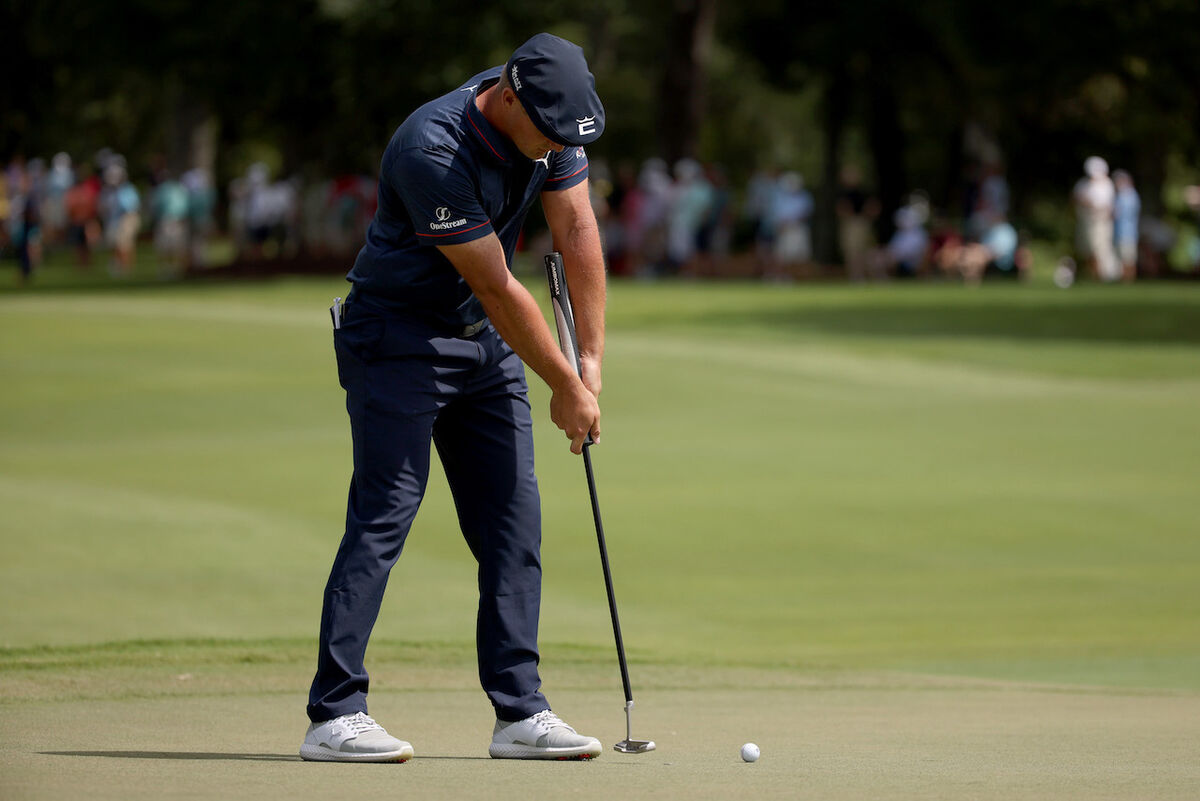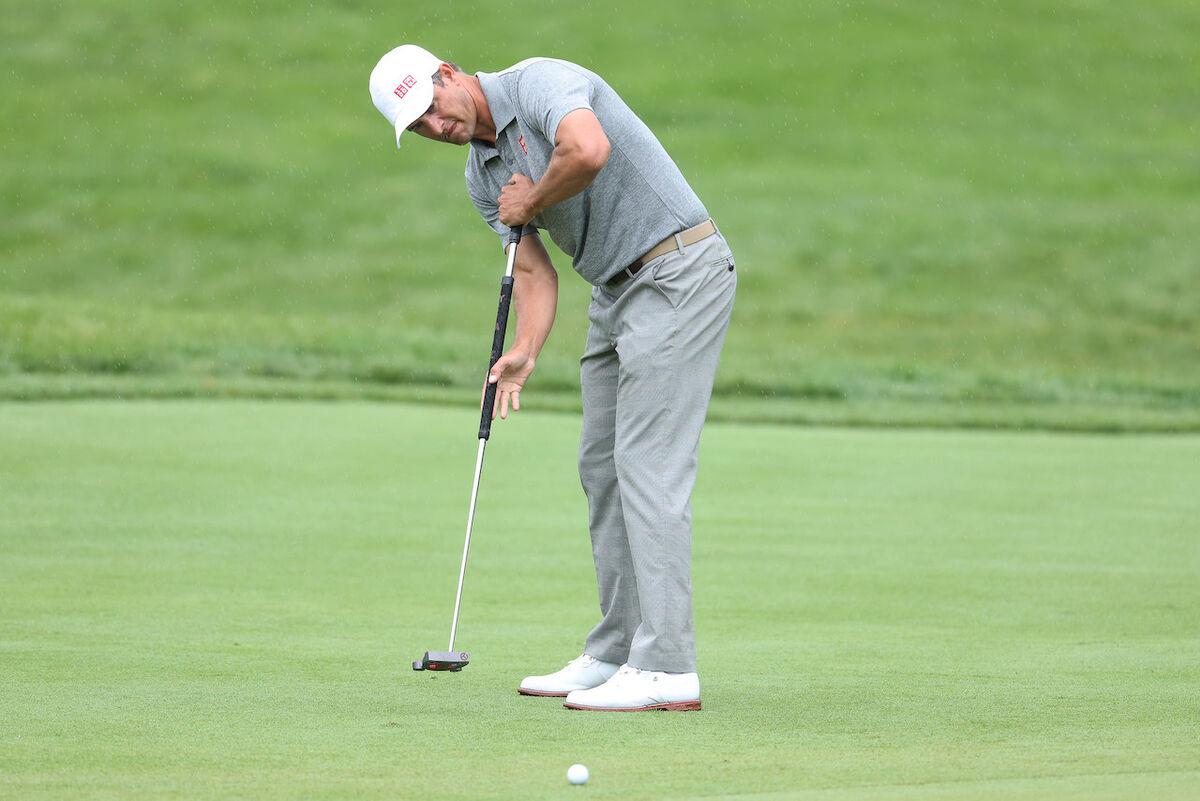How to Use a Long Putter Legally

Bernhard Langer uses a belly putter
Long putters, belly putters and anchored putters weren’t so much of a nuisance in golf from the late 1980s until the early 2010s. They were more of a last-ditch effort for players to tidy up their performance on the greens. But when long putters and an anchored stroke were used to win four out of six majors, culminating in Adam Scott’s 2013 Masters triumph, golf’s governing bodies had seen enough.
On Jan. 1, 2016, Rule 14-1b went in effect to combat the use of long putters, but the rule itself is not an equipment rule, rather a regulation on technique, leaving the door open for players to use so-called belly putters up to 48 inches long, as long as they do so within the rules.
Let’s clear up what exactly is legal, and what isn’t, when it comes to long putters, belly putters, and anchoring.
Anchoring Putter Ban
Since 2016, the Rules of Golf ban anchoring the club in making a stroke, either “directly” or by use of an “anchor point” according to the USGA.
Per the USGA Rules, a player is “directly” anchoring the club if they hold the club or a gripping hand in contact with any part of their body. The one exception to this is that a player may press the club against their hand or forearm.
The “direct” ban prevents players from sticking the butt of the club into their belly (hence the term “belly putter”) or sternum, or from placing their top hand over the butt of the club and anchoring that to their belly or chest.
The other stipulation golf’s governing bodies banned was the “anchor point” technique. By definition, an “anchor point” is created by a player who intentionally (as if they would do this accidentally) holds their forearm against their body (for example, their ribcage) to give the gripping hand an “anchor point.”
Don’t anchor, folks. Breaking Rule 14-1b results in a two-stroke penalty in stroke play, or a loss of hole in match play.
How to Legally Use A Long Putter
We mentioned earlier that Rule 14-1b is not an equipment rule, rather a rule that governs technique. Therefore, the use of long putters, up to 48 inches in length, the maximum for any club, is legal. That begs the question, how do you use a belly putter legally?
Two primary methods for using long putters are still common and completely within the Rules. There’s the arm lock putting method, utilized by Bryson DeChambeau, and the non-anchored long putter method, which Adam Scott uses.
Arm Lock Putting
The Rules of Golf allow a player to lean the shaft of a putter against their forearm, a technique called arm lock putting. This is exactly what DeChambeau, the 2020 U.S. Open Champion, does. In this method, DeChambeau grips down on the club, close to the steel, and leans the rest of the club from his grip up to the butt, against his lead forearm.

Guide to Arm Lock Putting: Everything You Need to Know

Matt Kuchar employs a variation of arm lock putting, the reverse arm lock method, in which he presses the end of the club against his trail arm.
Multiple PGA Tour professionals, including Billy Horschel and Xander Schauffele, have called for arm lock putting to be banned given that players like DeChambeau, Webb Simpson and Will Zalatoris, and Schauffele himself use it so effectively, but the technique remains legal to this day.
Long Putter Not Anchored

If you watch Adam Scott putt, it looks a lot like he’s still anchoring the long putter against his sternum, but in fact Scott holds the putter and his top hand grip almost microscopically away from his sternum, complying with Rule 14-1b. Avoiding contact between his grip hand or the butt of his putter and his chest keeps Scott within the Rules.
Popularity of the Long Putter
Keegan Bradley became the first player to win a major championship using a long putter when he claimed the 2011 PGA Championship. The very next month, Bill Haas won the Tour Championship with an anchored putter, marking the fifth PGA Tour win in seven weeks to utilize anchoring.
The anchor method continued to produce big-time winners in early 2012, as Matt Kuchar won the Players Championship and Webb Simpson won the U.S. Open in back-to-back months while anchoring.
There was no doubt the 2012 British Open Championship would be won by a player anchoring their putter, it was only a question of who. Adam Scott held a lead for much of the final round before some untimely bogeys let eventual champion Ernie Els back into the mix. Forty-three out of the 156 players in that 2012 British Open field used a long putter, according to the Hartford Courant.
After the 2012 season, the USGA and R&A announced a proposal to ban anchored strokes. Before the official announcement that the rule would change beginning in 2016, which came in May of 2013, Adam Scott won the Masters in April of 2013 to give long putters their fourth major championship in six tries.